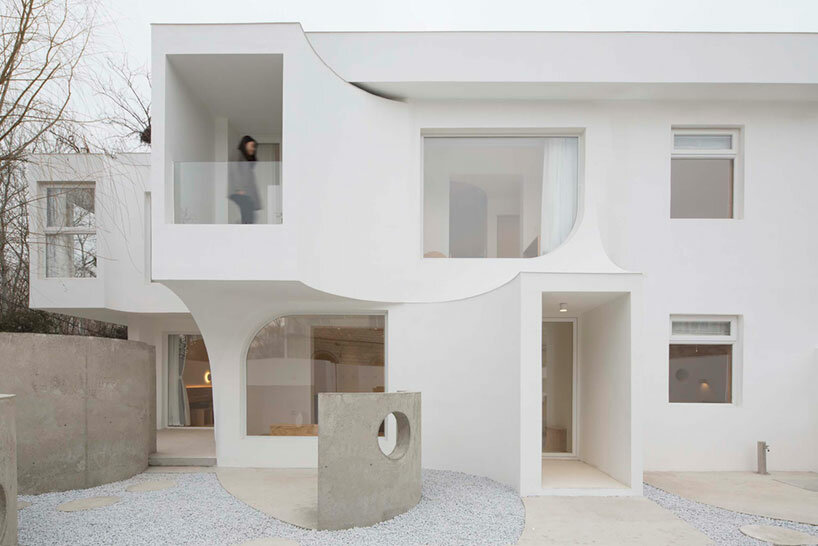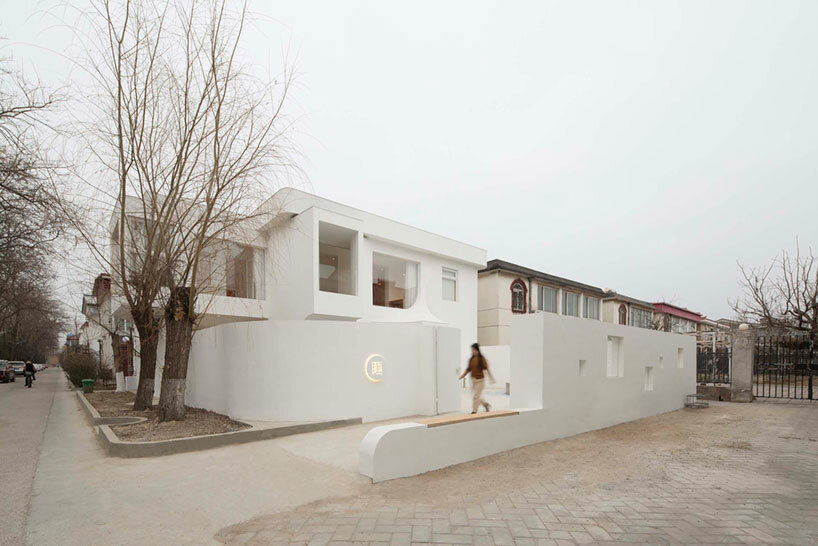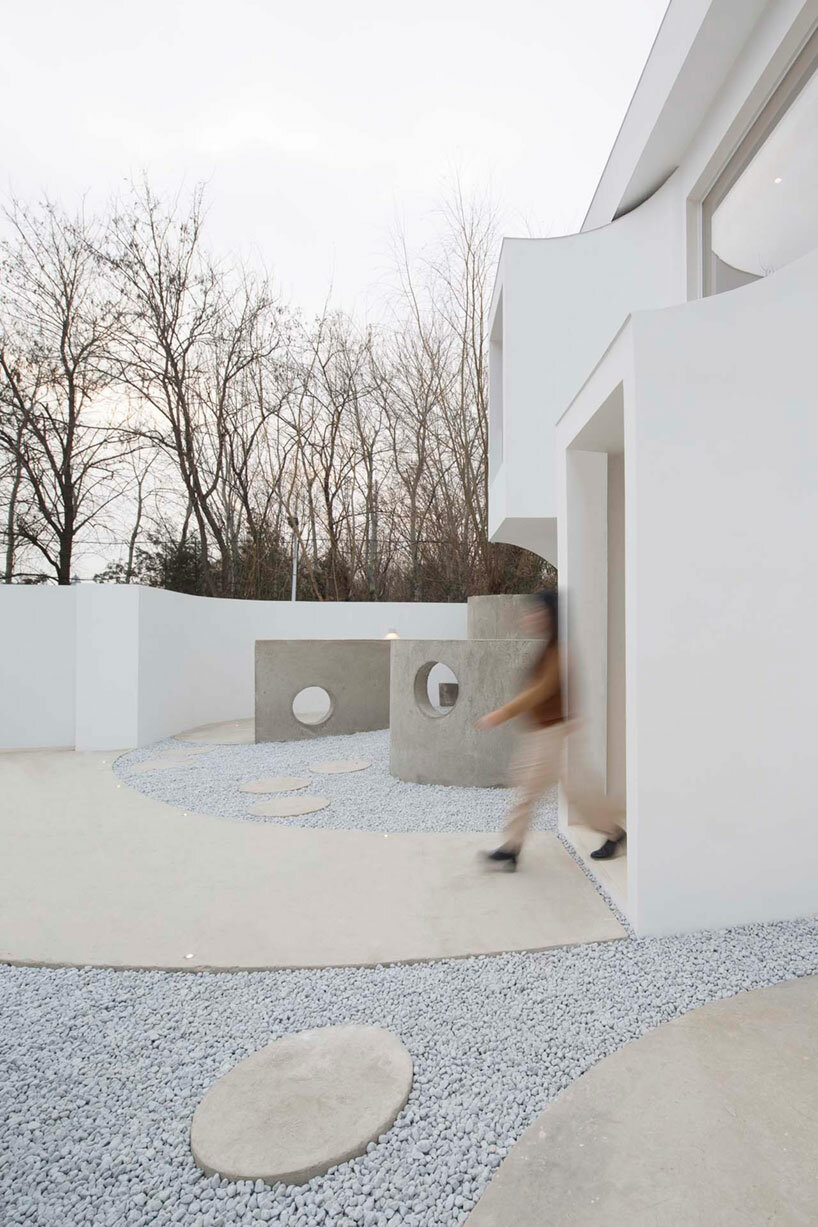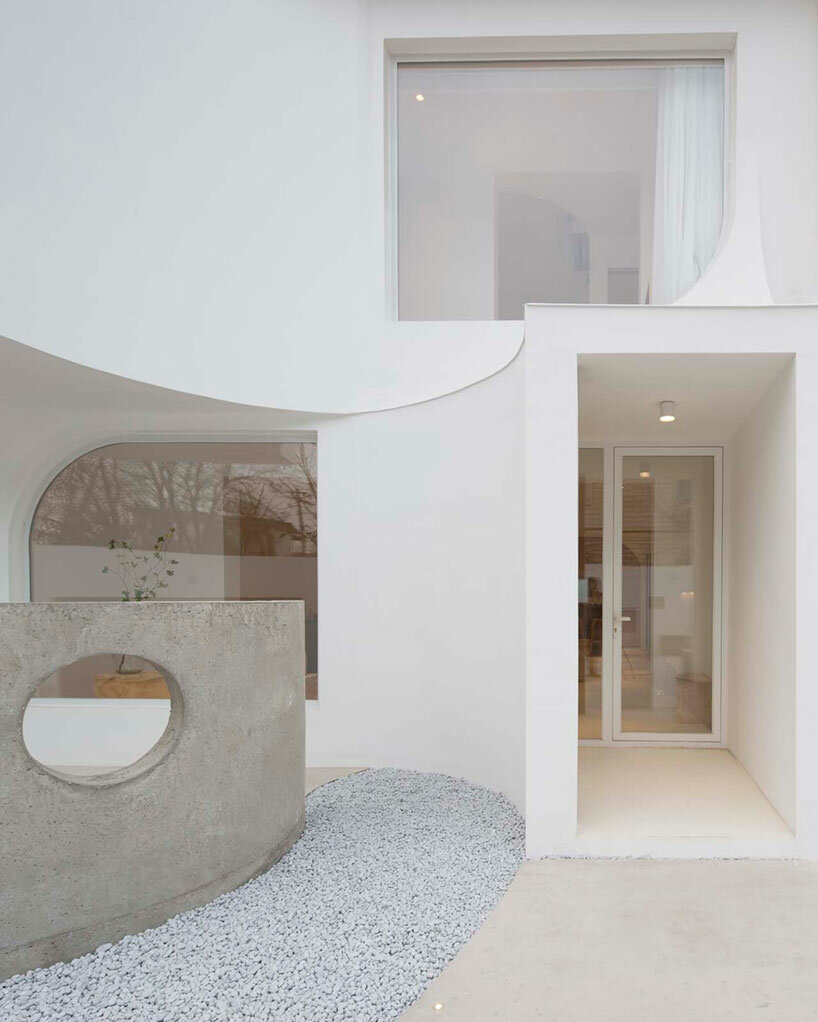atelier d’extra sculpts this ‘sleeping lab’ in an historic village outdoors beijing
a contemporary ‘sleeping lab’ in an historic beijing village
shanghai-based architecture studio atelier d’more unveils its ‘sleeping lab’ in china‘s huangmuchang village, an area which the team describes as the ‘back garden of beijing.’ the 600-year old village is comprised of small white houses, which still recall the rich history. the new boutique hotel, located in a prominent position in the northwest of the village, takes shape as a two-story brick-concrete building, and stands as the renovation of an existing residential office.
the team at atelier d’more was commissioned to renovate the space, as the sleep institute’s first bed and breakfast project near beijing universal studios. find the listing on airbnb to book a stay at the sleeping lab here.
 all images courtesy of atelier d’more | via airbnb
all images courtesy of atelier d’more | via airbnb
a garden retreat by atelier d’more
with the design of its sleeping lab outside beijing, atelier d’more (see more here) notes the lack of scenery in the residential area. with this in mind, the project takes on an inward-facing organization, surrounded by curving walls and a private garden. this semi-enclosed courtyard space opens out with only a few viewing frames along the southern wall. isolated from the bustle of the streets, the garden is exposed only to the blue sky and white clouds above. meanwhile, large glass windows introduce the scenery and light of the courtyard into the sleeping lab’s interiors to become a part of the experience.

the organic mini courtyards
the team at atelier d’more subdivides the courtyard surrounding its sleeping lab into several small semi-enclosed courtyards to create an inner courtyard environment. once spring arrives, each courtyard will be punctuated by a small tree. once planted, these trees will introduce an organic connection between the courtyards. a series of interactions between tearoom, guest rooms, walls, and the courtyard is created under the multi-level space.
the team continues: ‘when users enter the building, they can read the interior of the building in their own way and perspective, so the container function of the building can be reflected. the shadow moves with the light, and the scenery changes with people, making the architectural space full of poetry.’


